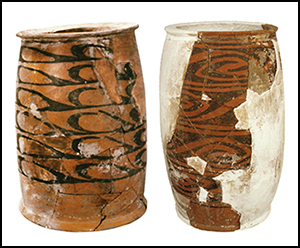Article contents
A place of pilgrimage? Niuheliang and its role in Hongshan society
Published online by Cambridge University Press: 20 January 2017
Abstract

The complex of Niuheliang, in north-eastern China, with its concentration of ceremonial architecture and unusual art, has been considered the most highly developed polity of the Hongshan period, representing the integration of a large territory. In contrast, the supposed absence of residential remains has been advanced to suggest that it was a vacant ceremonial centre. Systematic survey of the area is now helping to clarify relationships between ceremonial sites and occupation patterns. Densities of utilitarian pottery sherds were used to map settlement and estimate population levels in relation to the locations of ceremonial architecture and concentrations of ritual pottery. This reveals that despite unproductive soils, the area had a relatively high, although scattered, population, focused in part on ritual locations. The results support a role for Niuheliang as a place of pilgrimage, but within a nexus of settled communities that sustained its ceremonial activities.
- Type
- Research
- Information
- Copyright
- Copyright © Antiquity Publications Ltd, 2017
References
- 12
- Cited by


